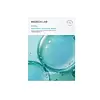What's inside
What's inside
 Key Ingredients
Key Ingredients

 Benefits
Benefits

 Concerns
Concerns

 Ingredients Side-by-side
Ingredients Side-by-side

Water
Skin ConditioningButylene Glycol
HumectantCamellia Sinensis Leaf Extract
Antimicrobial1,2-Hexanediol
Skin ConditioningHydroxyacetophenone
AntioxidantSodium Polyacrylate
AbsorbentPanthenol
Skin ConditioningAllantoin
Skin ConditioningPolyglyceryl-4 Caprate
EmulsifyingDipotassium Glycyrrhizate
HumectantParfum
MaskingPinus Palustris Leaf Extract
TonicUlmus Davidiana Root Extract
Skin ConditioningOenothera Biennis Flower Extract
AstringentPueraria Lobata Root Extract
HumectantWater, Butylene Glycol, Camellia Sinensis Leaf Extract, 1,2-Hexanediol, Hydroxyacetophenone, Sodium Polyacrylate, Panthenol, Allantoin, Polyglyceryl-4 Caprate, Dipotassium Glycyrrhizate, Parfum, Pinus Palustris Leaf Extract, Ulmus Davidiana Root Extract, Oenothera Biennis Flower Extract, Pueraria Lobata Root Extract
Water
Skin ConditioningGlycerin
HumectantTripropylene Glycol
AntioxidantNiacinamide
SmoothingMethylpropanediol
SolventPolyglycerin-3
HumectantChondrus Crispus
MaskingDipropylene Glycol
HumectantGlycereth-26
Humectant1,2-Hexanediol
Skin ConditioningHydroxyacetophenone
AntioxidantTrehalose
HumectantCeratonia Siliqua Gum
EmollientPotassium Chloride
Xanthan Gum
EmulsifyingGlucomannan
Skin ConditioningSucrose
HumectantMethyl Diisopropyl Propionamide
MaskingAdenosine
Skin ConditioningTrisodium Ethylenediamine Disuccinate
Disodium EDTA
Malachite Extract
AntioxidantSodium Hyaluronate
HumectantDipotassium Glycyrrhizate
HumectantAllantoin
Skin ConditioningPanthenol
Skin ConditioningHydrogenated Lecithin
EmulsifyingTetrahydroxypropyl Ethylenediamine
Tromethamine
BufferingArginine
MaskingPolyglyceryl-10 Oleate
Skin ConditioningMadecassic Acid
Skin ConditioningAsiaticoside
AntioxidantButylene Glycol
HumectantAsiatic Acid
Skin ConditioningPentylene Glycol
Skin ConditioningCentella Asiatica Extract
CleansingFicus Carica Fruit Extract
HumectantBeta-Glucan
Skin ConditioningCorchorus Olitorius Leaf Extract
Skin ConditioningGlycine
BufferingHordeum Vulgare Extract
EmollientCaprylyl Glycol
EmollientEthylhexylglycerin
Skin ConditioningCeramide NP
Skin ConditioningDimethylsilanol Hyaluronate
HumectantHydrolyzed Hyaluronic Acid
HumectantHydrolyzed Sodium Hyaluronate
Skin ConditioningHyaluronic Acid
HumectantPotassium Hyaluronate
Skin ConditioningSodium Hyaluronate Crosspolymer
HumectantHydroxypropyltrimonium Hyaluronate
Sodium Hyaluronate Dimethylsilanol
HumectantSodium Acetylated Hyaluronate
HumectantSodium Palmitoyl Proline
Skin ConditioningNymphaea Alba Flower Extract
Skin ConditioningWater, Glycerin, Tripropylene Glycol, Niacinamide, Methylpropanediol, Polyglycerin-3, Chondrus Crispus, Dipropylene Glycol, Glycereth-26, 1,2-Hexanediol, Hydroxyacetophenone, Trehalose, Ceratonia Siliqua Gum, Potassium Chloride, Xanthan Gum, Glucomannan, Sucrose, Methyl Diisopropyl Propionamide, Adenosine, Trisodium Ethylenediamine Disuccinate, Disodium EDTA, Malachite Extract, Sodium Hyaluronate, Dipotassium Glycyrrhizate, Allantoin, Panthenol, Hydrogenated Lecithin, Tetrahydroxypropyl Ethylenediamine, Tromethamine, Arginine, Polyglyceryl-10 Oleate, Madecassic Acid, Asiaticoside, Butylene Glycol, Asiatic Acid, Pentylene Glycol, Centella Asiatica Extract, Ficus Carica Fruit Extract, Beta-Glucan, Corchorus Olitorius Leaf Extract, Glycine, Hordeum Vulgare Extract, Caprylyl Glycol, Ethylhexylglycerin, Ceramide NP, Dimethylsilanol Hyaluronate, Hydrolyzed Hyaluronic Acid, Hydrolyzed Sodium Hyaluronate, Hyaluronic Acid, Potassium Hyaluronate, Sodium Hyaluronate Crosspolymer, Hydroxypropyltrimonium Hyaluronate, Sodium Hyaluronate Dimethylsilanol, Sodium Acetylated Hyaluronate, Sodium Palmitoyl Proline, Nymphaea Alba Flower Extract
Ingredients Explained
These ingredients are found in both products.
Ingredients higher up in an ingredient list are typically present in a larger amount.
1,2-Hexanediol is a synthetic liquid and another multi-functional powerhouse.
It is a:
- Humectant, drawing moisture into the skin
- Emollient, helping to soften skin
- Solvent, dispersing and stabilizing formulas
- Preservative booster, enhancing the antimicrobial activity of other preservatives
Allantoin is a soothing ingredient known for its protective and moisturizingg properties. Because of this, it is often added to products with strong active ingredients.
Studies show higher concentrations of this ingredient can promote wound healing.
Though it can be derived from the comfrey plant, allantoin is produced synthetically for cosmetic products to ensure purity.
Learn more about AllantoinButylene Glycol (or BG) is used within cosmetic products for a few different reasons:
Overall, Butylene Glycol is a safe and well-rounded ingredient that works well with other ingredients.
Though this ingredient works well with most skin types, some people with sensitive skin may experience a reaction such as allergic rashes, closed comedones, or itchiness.
Learn more about Butylene GlycolDipotassium Glycyrrhizate comes from licorice root.
Extracts of licorice have demonstrated to have antibacterial, anti‐inflammatory, antiviral, antioxidant properties.
One component, glabridin, has extra potent antioxidant and soothing properties. It has also been found to block pigmentation from UVB rays in guinea pigs.
Licorice Root also contains a flavonoid. Flavonoids are a natural substance from in plants. Flavonoids also have antioxidant properties.
Another component, glycyrrhizin, has been found to have anti-inflammatory and antimicrobial benefits. This may make licorice root extract effective at treating acne. However, more research is needed to support this.
Liquiritin is one of the flavone compounds found in licorice. It has been found to help lighten skin by preventing tyrosinase from reacting with tyrosine. When the two react, protein is converted to melanin. Melanin is the substance in your body that gives your features pigmentation.
Licorice root is native to Southern Europe and Asia. It has been used in traditional Chinese medicine to help with respiratory issues.
Learn more about Dipotassium GlycyrrhizateHydroxyacetophenone is antioxidant with skin conditioning and soothing properties. It also boosts the efficiency of preservatives.
This ingredient is not irritating or sensitizing.
Panthenol is a common ingredient that helps hydrate and soothe the skin. It is found naturally in our skin and hair.
There are two forms of panthenol: D and L.
D-panthenol is also known as dexpanthenol. Most cosmetics use dexpanthenol or a mixture of D and L-panthenol.
Panthenol is famous due to its ability to go deeper into the skin's layers. Using this ingredient has numerous pros (and no cons):
Like hyaluronic acid, panthenol is a humectant. Humectants are able to bind and hold large amounts of water to keep skin hydrated.
This ingredient works well for wound healing. It works by increasing tissue in the wound and helps close open wounds.
Once oxidized, panthenol converts to pantothenic acid. Panthothenic acid is found in all living cells.
This ingredient is also referred to as pro-vitamin B5.
Learn more about PanthenolWater. It's the most common cosmetic ingredient of all. You'll usually see it at the top of ingredient lists, meaning that it makes up the largest part of the product.
So why is it so popular? Water most often acts as a solvent - this means that it helps dissolve other ingredients into the formulation.
You'll also recognize water as that liquid we all need to stay alive. If you see this, drink a glass of water. Stay hydrated!
Learn more about Water